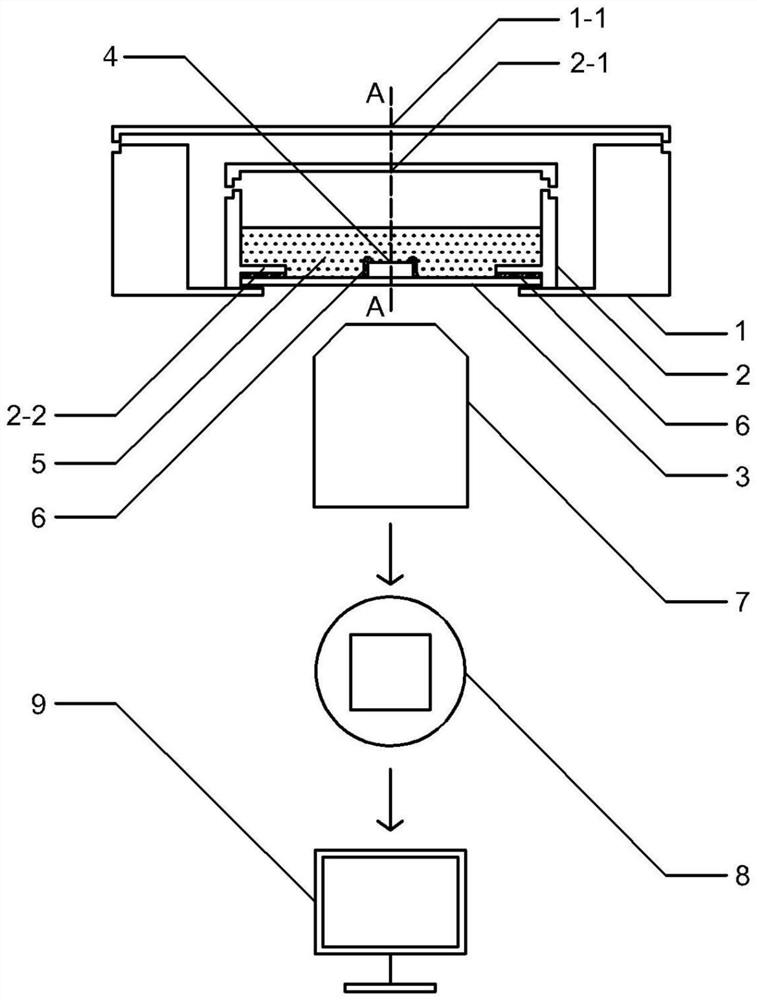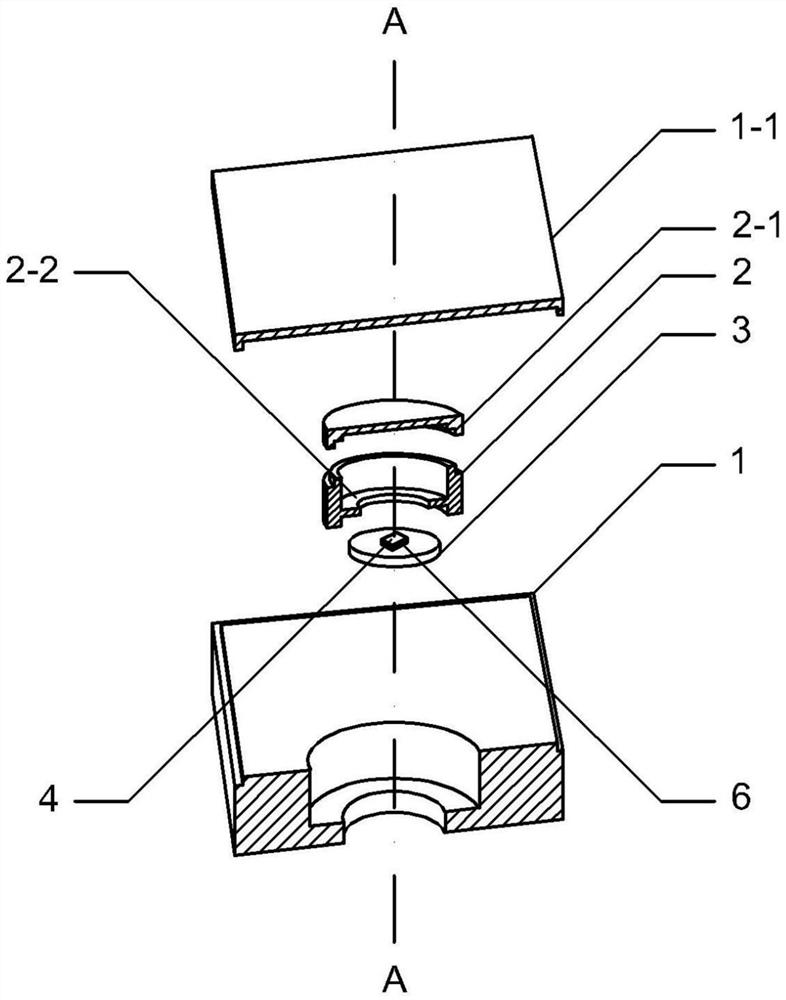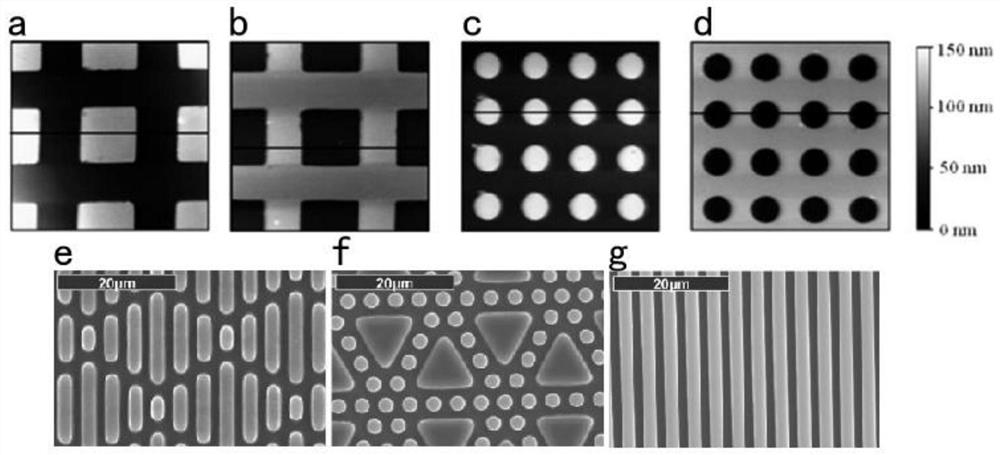An in-situ characterization device and characterization method for the interaction between microorganisms and solid surfaces
A solid surface, microorganism technology, applied in the field of microbiology and materials science, and microscopy, can solve the problems of the influence of microbial activity, the inability to observe the light quenching for a long time, and the inability to observe the real-time movement behavior of microbial individuals, so as to achieve convenient construction. , Wide range of application, simple operation effect
- Summary
- Abstract
- Description
- Claims
- Application Information
AI Technical Summary
Problems solved by technology
Method used
Image
Examples
Embodiment 1
[0055] An in-situ characterization device for the interaction between microorganisms and solid surfaces, including a temperature-controlled hottable 1, a microbial culture tank 2, a glass substrate 3, solid surface materials 4, an inverted microscope 7, an image sensor 8 and a host computer 9, and a temperature-controlled hottable 1 It is a cuboid container with an opening at the top, and a temperature-controlling heating platform cover 1-1 is provided at the opening at the top, and a circular through hole is provided on the bottom surface of the inner wall of the temperature-controlling heating platform 1; device, the bottom end is fixed on the bottom surface of the inner wall of the temperature control hot table 1, the top opening is provided with a microbial culture tank cover 2-1, and the lower part of the inner wall of the microbial culture tank 2 is provided with a ring-shaped annular baffle 2-2 , the outer edge of the annular baffle 2-2 is fixed along the inner wall of t...
Embodiment 2
[0060] The in-situ characterization device for the interaction between microorganisms and solid surfaces is the same as in Example 1, except that the solid surface material 4 is replaced by a polyurethane film with an area of 1cm×1cm and a thickness of 0.05mm, and the surface pattern is hemispheres with a diameter of 2 μm that are hexagonal close-packed shaped raised. The thickness of the glass substrate 3 is 0.17 mm.
[0061] Methods for in situ characterization of microbial interactions with solid surfaces are as follows:
[0062] Put the Staphylococcus aureus in the TSB culture medium, shake the bacteria at 180rpm and 37℃ for 12h, then dilute to 10 5 CFU / ml, take 2ml and add it to the microbial culture tank 2, adjust to 37°C, turn on the inverted microscope 7, adjust the height of the objective lens of the inverted microscope 7 until it focuses on the solid surface 4, turn on the image sensor 8 and the host computer 9, and the host computer 9 The received digital signal...
Embodiment 3
[0065] The in-situ characterization device for the interaction between microorganisms and solid surfaces is the same as in Example 1, except that the solid surface material 4 is replaced by a polystyrene film, with an area of 1cm×1cm and a thickness of about 0.05mm; the surface pattern is hexagonal close-packed with a diameter of 5 μm hemispherical bumps. The thickness of the glass substrate 3 is 0.17 mm.
[0066] Methods for in situ characterization of microbial interactions with solid surfaces are as follows:
[0067] Put the Staphylococcus aureus in the TSB culture medium, shake the bacteria at 180rpm and 37℃ for 12h, then dilute to 10 5 CFU / ml, take 2ml and add it to the microbial culture tank 2, adjust to 37°C, turn on the inverted microscope 7, adjust the height of the objective lens of the inverted microscope 7 until it focuses on the solid surface 4, turn on the image sensor 8 and the host computer 9, and the host computer 9 The received digital signal is processed...
PUM
| Property | Measurement | Unit |
|---|---|---|
| thickness | aaaaa | aaaaa |
| size | aaaaa | aaaaa |
Abstract
Description
Claims
Application Information
 Login to View More
Login to View More - R&D
- Intellectual Property
- Life Sciences
- Materials
- Tech Scout
- Unparalleled Data Quality
- Higher Quality Content
- 60% Fewer Hallucinations
Browse by: Latest US Patents, China's latest patents, Technical Efficacy Thesaurus, Application Domain, Technology Topic, Popular Technical Reports.
© 2025 PatSnap. All rights reserved.Legal|Privacy policy|Modern Slavery Act Transparency Statement|Sitemap|About US| Contact US: help@patsnap.com



